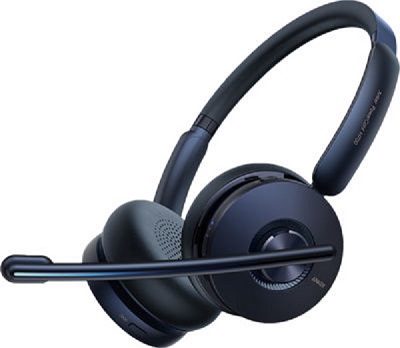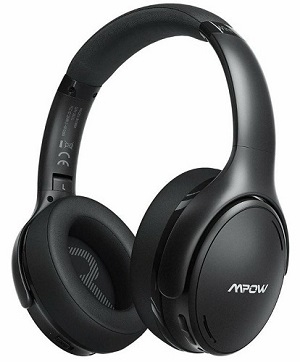Noise is omnipresent, whether it’s the sound of your neighbor’s lawnmower, the distracting chat in the workplace (or) the buzz of the air conditioner, and a few hours of solitude can now feel more precious than gold. Well, the good thing is that we do have some types of headphones that can solve this.
Noise cancellation and noise isolation are such technologies that are efficient in blocking out external sounds. In this article, we will take you through these two technologies including what they are, their differences, comparisons, benefits, and downsides. Get into the article to explore more.
Outline
ToggleWhat is Noise Isolation?

Usually, the physical barrier “isolates” your ear from noise (or) reduces noise levels. Regardless of its efficiency, the sound will still seep into your ears depending on the fit, design, and materials used.
However, most headphones are already using noise isolation technology, but still, they can be made better by inserting the thick insulating materials of earmuffs into the ear cups of your headphones.
Here are the top three features of noise isolation.
- Physical barriers are used to block external noises
- Eliminates both low and high-frequency sounds
- Ease of use and can be carried wherever you go
What is Noise Cancellation?

The miniature microphones “listen” to the surrounding sounds. The sound wave data is then sent to a built-in chipset, which uses algorithms to generate an opposing soundwave (180 degrees out of phase) through the speakers. This will effectively block out any incoming ambient sound waves.
Here are the top three features of noise cancellation.
- Blocks out undesired external sounds using ANC (Active noise cancellation)
- Reduces low-frequency sounds effectively
- Enhanced audio quality and increased concentration
Comparison Table: Noise-Cancellation Vs Noise-Isolation
| Feature | Noise Cancellation | Noise Isolation |
| Audio Quality | Doesn’t offer accurate sound quality | Delivers exceptional sound quality |
| Performance | Efficiently reduces low-frequency sounds | Effectively reduces both low-frequency and high-frequency sounds |
| Technology | Microphones and sound wave cancellation | Physical barriers (or) materials to block noise |
| Power Source | Requires batteries (or) power source | Don’t require batteries (or) power sources |
| Portability | Available in portable headphone/earbud form | Limited portability, such as earmuffs (or) earplugs |
| Comfort | Can be worn comfortably for long hours | Causes some discomfort (or) pressure on the ears |
| Safety | May not be safe at all times | Completely safe |
| Use Cases | Airplanes, offices, commuting, music listening | Sleeping, studying, industrial environments, concerts |
| Cost | More expensive | Budget-friendly |
Difference Between Noise Cancellation and Noise Isolation
The ordinary buyer believes that there is no difference between noise-canceling and noise-isolating headphones. But in reality, many factors distinguish them apart. Now let’s understand the difference between these two technologies by comparing their features. Here we go.
1. Noise Reduction
Noise-isolating technology uses the physical attributes of headphones and earbuds to filter out ambient noise. Moreover, the effectiveness in reducing ambient noise depends on the fit of the user and the materials used. Passive noise cancellation can reduce mid-to-high-frequency noise by 15 dB to 30 dB.
Noise-canceling technology, on the other hand, uses electronic components to generate sound waves that cancel out the incoming sound waves from the surroundings. These sound waves “cancel” each other out, substantially lowering ambient noise mostly low-frequency sound waves by 30 dB.
2. Sound Quality
The manufacturers of noise-isolating headphones (or) earbuds focus more on the design, engineering, and built-in materials that will produce the best sound quality.
Whereas, noise-canceling headphones (or) earbuds are housed with additional equipment for producing anti-noise waves. This coloration may affect the final sound output reducing the accuracy of sound quality.
3. Power Consumption
Noise-isolating headphones (or) earbuds do not require a power source to work as they do not include any additional electronic components (or) circuits.
While active noise-canceling headphones (or) earbuds cannot function without power, a.k.a batteries. You must regularly charge them to use the noise-canceling features.
4. Comfort
When it comes to comfort, users often come with different experiences. So, there is no clear winner between noise isolation and noise cancellation.
Noise isolation completely relies on the fit and seal of the headphones (or) earbuds. So, some fit types can be tiresome, non-breathable, and even painful when worn for an extended period if the fit is poor.
Besides, some users have reported experiencing pressure on their ears while wearing noise-cancellation headphones.
5. Safety
Truly speaking both noise-isolating and active noise-canceling headphones are safe to use as long as you are aware of your surroundings.
As noise isolation headphones (or) earbuds don’t seal the background noises completely they are safe to use even while walking, commuting (or) traveling.
But importantly you should not use active noise-canceling headphones, especially while walking down the street, in crowded places, riding (or) jogging to keep yourself safe.
6. Price
Pricing has become more nuanced in recent years due to the availability of literally thousands of choices across hundreds of brands, models, price points, and other features.
Generally, noise isolation headphones (or) earbuds are quite affordable and budget-friendly. But, even high-end noise isolation devices with advanced features are expensive.
Noise-canceling headphones (or) earbuds are pretty expensive and cannot be afforded by everyone. This is because of the added cost of materials and production spent to integrate the electronics (or) circuits into the headphones.
7. Customization and Adaptability
Noise isolation devices do not offer customization and adaptability. Additionally, the effectiveness of noise isolation is dependent on the quality and fit of the physical barriers (or) materials used.
Coming to noise cancelation models, most devices come with customization options that allow customers to change the amount of noise cancellation to their preference. Furthermore, several versions have adaptive noise cancellation, which can automatically adjust relying on the noisy environment.
8. Sound Leakage
Noise isolation technology uses physical barriers like earmuffs (or) earcups to block external sounds. However, they are efficient in doing so, but still, there will be some strong sounds that enter your ears through barriers.
On the other side, noise cancellation technology generates an anti-noise sound wave that cancels out the incoming noise waves. Therefore, there is no chance of sound leakage into your ears.
9. Portability
Genuinely, both noise cancellation and noise isolation devices are portable. They easily fit into your bag (or) pocket, allowing you to carry effortlessly on the go.
Noise Cancellation Vs Noise Isolation – FAQs
Ans: Both noise isolation and noise cancellation are good at blocking external sounds. But comparatively, noise cancellation technology is more efficient in cutting off ambient sounds completely.
Ans: Undoubtedly, noise-canceling headphones. They work well for constant, low-frequency noise like car engines, fans, hums, and even human voices.
Ans: Yes, of course. However, we recommend going with a set of Active noise-canceling headphones if you want to drown out the noise so you can hear your tracks.
Ans: Passive noise-cancellation devices are ideal for listening to music in its purest form. These devices uniformly disperse pressure on your ears, reducing fatigue significantly.
Conclusion
Therefore, this is all about noise cancellation and noise isolation. Most users envision that these both are the same, but still, this isn’t true. There are a lot of factors that differentiate them. We hope this article helps you in understanding the concepts of noise isolation and noise cancellation completely along with their differences. Both of these technologies are awesome and efficient in various factors. Anyways, choosing among them is completely your choice.

